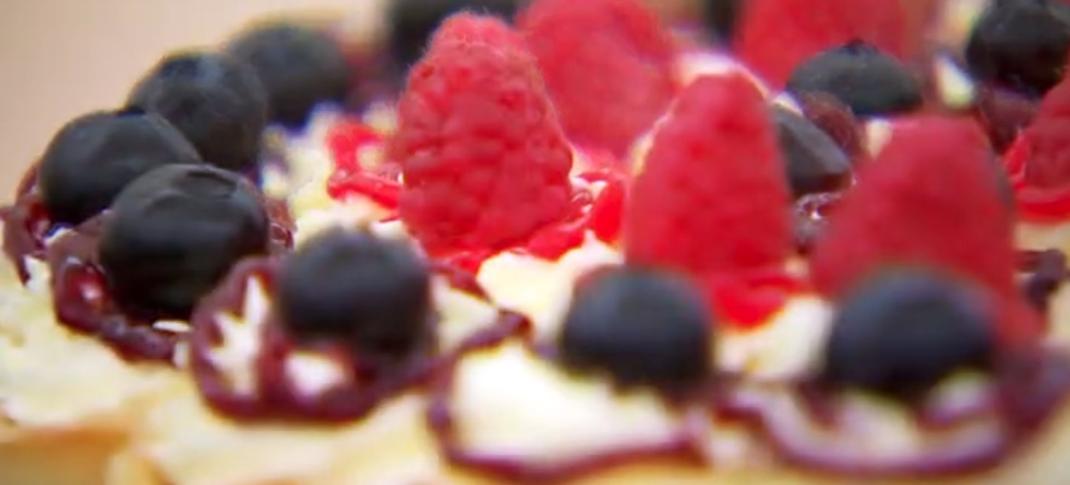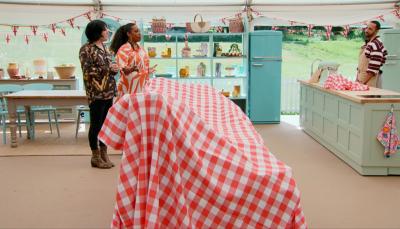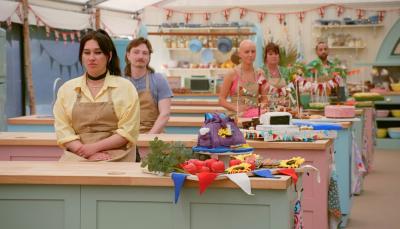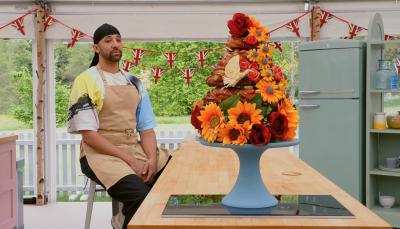Know Your GBBS History: Pie Week

Our latest series runs down the truth behind the popular bakes featured on The Great British Baking Show. This week: Pies!
Pie Week
In the early seasons of Great British Bake Off, "Pies" and "Tarts" were separate challenges. After this season, there was never a stand-alone Pie Week again. It was either "Pies & Tarts" combined, or Pie challenges were folded into larger theme weeks like "Victorian" and "Tudor."
Wellington
The Wellington is a meat pie usually associated with beef, but Chicken Wellington and Lamb Wellington are totally legal and delish. It should be considered a puff pastry challenge by rights, as making one is less about the creation of a pie crust and filling it with meat. Instead, it's about preparing a filet steak covered in pate, and then rolling it up in a full puff. (Some wrap it in rough puff. Personally, I was sorted into Hufflepuff and therefore will eat both.)
Most assume the Beef Wellington must be in some way associated with Arthur Wellesley, 1st Duke of Wellington, due to the name. But in reality, meat baked in pastry had been around for generations prior to Wellington becoming famous. Also, the dish is suspiciously similar to the French "filet de bœuf en croûte" (fillet of beef in pastry.) Historians, therefore, assume name "Beef Wellington" is actually an early 1800s "patriotic rebranding" of a dish during the revolutionary period when anything that could be construed as "French sympathies" might be taken as disloyalty to the crown.
Hand-Raised Pie
The "Raised Pie" is another pastry typically associated with savory and meat fillings. It's called a "raised" pie because of the tall, thick sides of the bake, and "hand-raised" means it's made with no pie tin whatsoever, the pastry outsides are "hand molded."
The earliest recipes for them date back to the time of Richard II in the 14th century. During the middle ages, when there weren't pie tins, lunch pails or refrigeration, the thick pastry walls of the raised pie functioned in lieu of all these things. Thick sides withstood the baking, they kept the filling inside fresh and they stayed sturdily whole when wrapped in a cloth and taken to work.
It speaks volumes of how this pie was a function of its time that there's no North American equivalent. By the 1600s, pie tins were a thing everyone used, so the "hand raised pie" was no longer necessary. That being said, the dish is considered an old-school English tradition and recipes from the 1800s can be found online for cooks to work from today.
American Pie
As in Bye bye, Miss..... No.
This challenge is sort of an oddity for The Great British Baking Show. It may explain when the Pie category was dropped as a stand-alone after this season. Ask any British person you might know (or all the ones on Twitter last Friday when this episode aired) and they'll all tell you: No one calls these "American Pies." I get what the show was aiming for. This traditionally lattice-worked topped, fruit-filled, fluted-crust creation has been associated with "American as Apple Pie" since the middle of the last century. But to assign this entire class of bake to us is ridiculous. For a show that began predicated on teaching "the history of baking in England" to invent this faux category, and then have the bakers pick these specific variations in order to make the theme "work" rings oddly false.
Fruit and nut pies (and their upper-class versions, fruit tarts) were invented in the 1500s. English history claims, for instance, that the first cherry pie was created to be served to Elizabeth I. (Sorry, Warrant.) Unlike the raised pies of the Technical Challenge, these styles of pies did come over directly to the US in the 1600s, and we got the idea of putting flavors in them that were stolen from the Native America cultures we found here, like pecans and pumpkins. But that does not make them "American Pies."
Next week: Puddings!




